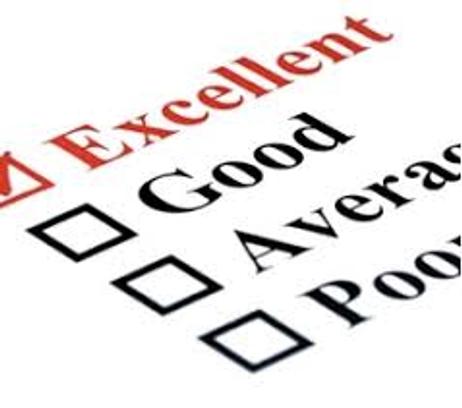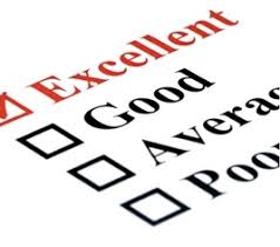Los Angeles is leading the pack with teacher ratings designed to better evaluate teachers' performance despite variables like parental involvement and income levels. The tests, coined "value-added" evaluations, look at the progression of each individual student when providing teacher ratings rather than simply applying standardized test scores across the board.
According to a report in the City Journal, these value-added tests were used to evaluate teacher performance in both math and reading for third, fourth, and fifth-grade teachers across the Los Angeles Unified School District. How well did the teachers score?
Making the Grade
According to a report on National Public Radio (NPR), the original value-added evaluations were conducted by two investigative reporters at the Los Angeles Times: Jason Felch and Jason Song. The two compiled standardized test scores on every Los Angeles school district child for the past seven years. The reporters could conduct a comprehensive analysis of teacher performance using the data collected on the test scores and the teachers. The findings on 6,000 California teachers were published in the Los Angeles Times, along with the data that showed how well students performed on standardized tests.
A report in the Los Angeles Times explained that the value-added portion of the evaluation was based on a student's individual performance on initial tests and how that performance improved or backtracked. A student's improvement in school could be directly linked to the performance of his teachers, making this assessment much more accurate than simply looking at a snapshot of student test scores.
Ratings were based on whether the teacher "added value" to a student's academic year rather than the teacher's ability to teach to a test – an argument made with many standardized test ratings today.
However, the creators of the assessment are the first to admit that this is not a complete assessment of a good teacher or a good school. Their choice to make the ratings public was based on their belief that parents and the general public deserve to have information about the performance of employees providing a service to the community. Despite some obvious shortcomings, these ratings may be the most accurate and complete teacher performance assessment to date.
This video shows a discussion about students grading their teachers.
Benefits of Publicizing Value-Added Ratings
The published numbers by the Los Angeles Times were not printed in haste. On NPR, author Jason Felch said that his team spent the better part of a year working the numbers into an accurate, comprehensive assessment of teacher performance. The primary purpose for making the information public was to provide parents with a tool, albeit limited, for determining the ability of their children's teachers.
However, Felch is the first to recognize the limitations of the information. While star teachers and those who fail to make the grade stand out from the crowd, the majority in the middle don't receive much distinction in their performance standards. Felch also cautioned that their information is a mere estimate of teacher performance, which means those on the far end of the spectrum will be the ones to get noticed.
Teachers Say No
While most of those in public education agree that value-added assessments are a more accurate tool for weighing teacher performance, not everyone is happy about making the analysis results available to the general public.
Randi Weingarten of the American Federation of Teachers told ABC News, "Let the teachers see it, let them use it. In fact, they are starting to do that in L.A., but don't publish it in this way." Others worry that publicizing such results might indicate that these assessments are the complete picture of a teacher's performance when they really can't be.
This video shows what teachers think of being rated by their teachers.
Jason Song, another analysis author, responded, "I can certainly understand why they'd be angry or frustrated to have their names and scores published in the newspaper in this way. But we weighed the public interest in this kind of information and decided it would be best to release it."
Value-added assessments have been embraced by many in the public education field, as well as U.S. Education Secretary Arne Duncan and President Obama. In fact, according to the City Journal report, Washington D.C.'s school district fired 26 teachers last month because of low value-added assessment scores.
Duncan also agrees with making the results of such assessments available to the public, and lauded the Los Angeles Times' efforts to do so. With so many backing the value-added assessments – as well as the decision to make the results a matter of public information – it is possible that parents will see teachers across the country evaluated similarly, which will help them make the best choices for their children's education.
Questions? Contact us on Facebook. @publicschoolreview















